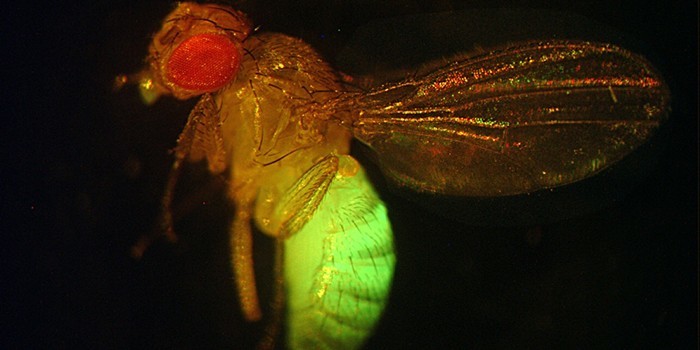Small and with a life cycle of just two weeks, fruit flies are seen by many as pests and a problem.
However, the 3mm Drosophila melanogaster has played a vital role in genetics and developmental biology for nearly a century.
Genetically diverse and easy to use in research, they help scientists in a variety of studies, from how the brain functions to how cancer develops.
Dr Mark Matfield of the Association for International Cancer Research (AICR) in St Andrews said, “Cancer is a disease of the most fundamental processes of living organisms, which is why it is found in all animals.
“The basic causes and mechanisms remain the same, from fruit flies to humans. Over the last 20 years, research into these insects has led to major advances in cancer research. That is why we, at AICR, are keen to support high-quality research in this area.”
Changes to proteins in a cell underlie many cancers and using funding from AICR, a team of scientists in Portugal, Belgium and Norway plan to use the fruit fly to understand exactly how changes to proteins, identified in the test tube, affect how cells divide in a living organism.
Dr Rui Martinho at the Instituto Gulbenkian de Ciencia (IGC), in Portugal, in collaboration with researchers in Ghent, Belgium, and Bergen, in Norway, hopes the study will increase understanding of how cancer begins.
One way that cells control their gene or protein activity is to add chemical groups or “tags” to modify them 80-90% of human proteins are modified this way.Aggressive cancersBut some enzymes responsible for these modifications are present at increased levels in certain aggressive cancers, or they are responsible for incorrect tagging that can drive the cell to grow and divide in an uncontrolled manner, forming a tumour.
In the fruit fly, Dr Martinho and his collaborators propose to unravel the behaviour of one of these enzymes to understand its role in the growth and division of cells.
The modifications carried out by this enzyme affect a wide range of cellular functions during cell division and apoptosis programmed cell death essential for the normal balance of the organism, but they may also be involved in the development of cancer.
He said, “We will focus on the enzyme San, to try to identify what it acts upon in the cell, how it is regulated, the consequences of its actions and, ultimately, its effect on how cells divide. Our approach will allow a better understanding of the impact of these modifications in healthy cells and cancer development in a living context closer to our own, rather than in human cells grown in test tubes or in unicellular organisms, such as yeast, as previous studies have done.”
Dr Martinho’s proposal, worth 147,000 euros (£132,000), was one of 23 successful projects totalling more than £4 million approved by AICR in March this year and which recently got under way.
